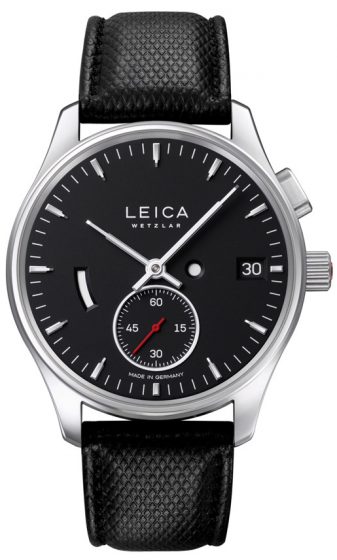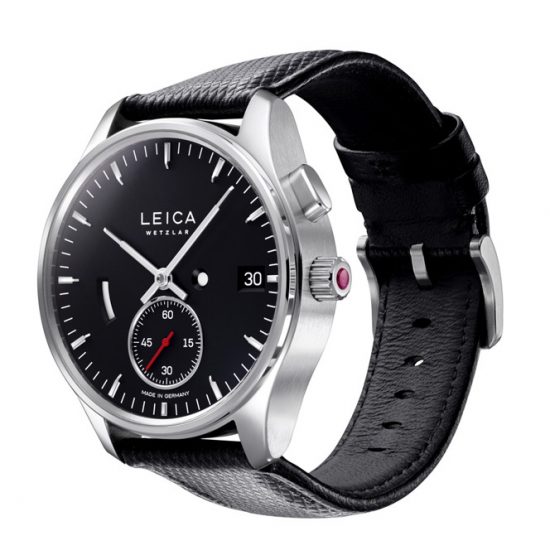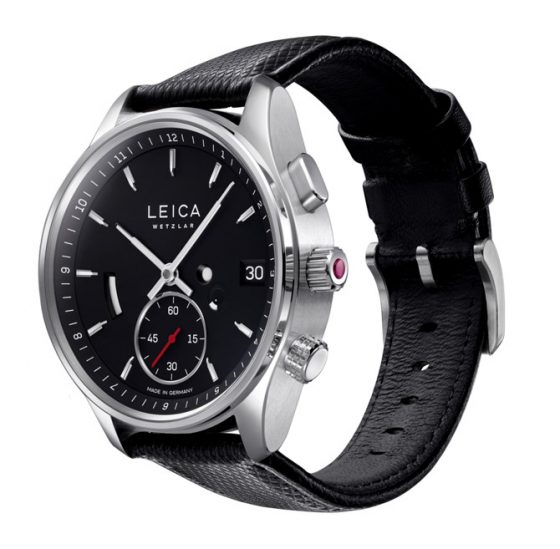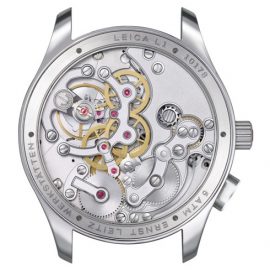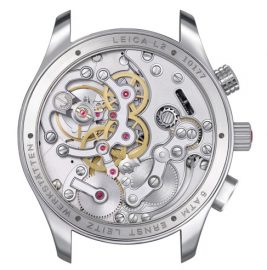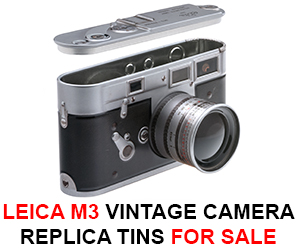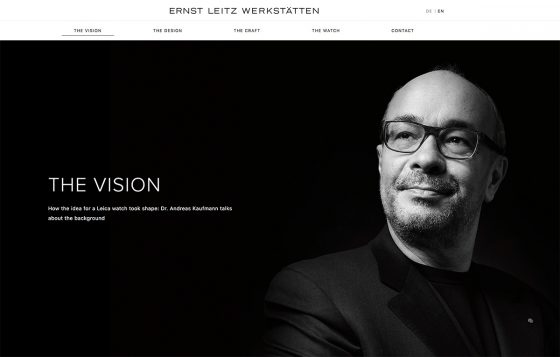
When the new Leica watches were officially announced, the ernst-leitz-werkstaetten.com website was offline. The site is now live and you can get some additional information on the new Leica L1 and L2 watches and Ernst Leitz Werkstätten in the form of an interview with Dr. Andreas Kaufmann:
Dr. Kaufmann, how did the idea of a Leica watch come about?
The idea of producing a mechanical watch has been around for quite a long time; it was already being considered when the era of the quartz watch was coming to an end, in the late eighties, early nineties. In a 1996 licensing agreement, that grants the trademark rights for Leica for 99 years and details which products can be manufactured under its flag, watches are mentioned in the second place.
When you look at the rangefinder built into the M, made up of well over one hundred parts, it’s like the small movement. A watch produced by Leica therefore, always has to have a mechanical movement. The link to mechanics is something Leica stands for.
And then – it must have been around 2012 – I said, “let’s do something about it now.” We started out by talking with various manufacturers, including Hanhart, a small German brand located in the Black Forest. Back then, the designer, Achim Heine, had already built a mood board for a watch, that was to be based on a Hanhart movement.
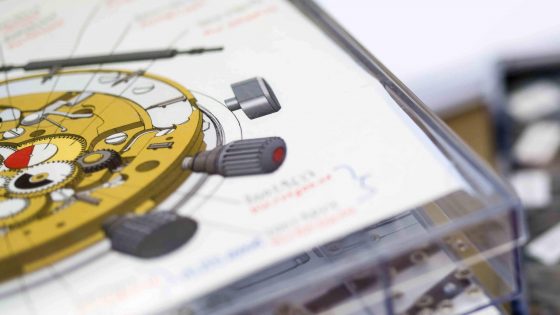
So, at the time you didn’t intend to build your own movement?
No. At first it was about doing something special. Hanhart had some older movements in its repertoire, which could have been modified to Leica’s requirements; but nothing came of it for a number of reasons. We also spoke with the founder of Chronoswiss, Gerd-Rüdiger Lang. Chronoswiss was the only new watch brand created in Germany at the end of the eighties. As a German watchmaker, he also managed to push through a few things that are now common in highquality watches. For example, the glass back was his idea. Lang was the first to create an awareness of the actual inner workings of a watch. The somewhat larger crown also came from him, an idea that he derived from the old pocket watch.
In the end, we didn’t go on to collaborate with Chronoswiss either, but we were able to put together a network of partners, with whom we could imagine producing a movement. On the one hand, there is the designer Achim Heine, whom I very much appreciate. In 1999 he also introduced Leica’s new design language and corporate identity. Up until 2008 he was one of the company’s main designers, while also already involved in watches. On the other hand, there’s Reinhard Meis, a builder from A. Lange & Söhne, who was retired at the time; and there’s Lehmann Präzision GmbH from the Black Forest. This resulted in the creative entity that developed the Leica watch. Some of Mr. Meis’s ideas, such as the patented push-piece crown, are included. Things became protracted, however, because developing a movement is a very painstaking job.
Does this mean that the movement has been developed from scratch?
Completely! It has never existed in this form before. Lehmann produces the movement for Leica, and we finish it off at the Ernst Leitz Workshops in Wetzlar. It’s a complicated and expensive matter. You don’t develop a movement just like that; but with time we had simply found the right arrangement. I have always said, “the Leica watch has to come from above.” If a mechanical watch wants to be a counterpart for the M, then it has to represent and exhibit something unique. I think we’ve managed to do that.
So, the development of its own movement was more of a necessity than a wish?
From the perspective of the market it was a necessity. ETA – a firm belonging to the Swatch group – produces wonderful mass movements; but there was a Damocles sword situation, because the Swatch group had warned that at some point they wanted to stop delivering companies that make alterations to their movements. This depends on the outcome of various antitrust lawsuits. ETA controls around 70 to 80 percent of the market. Another company is Sellita. The Seiko Group also has some things available at reasonable prices. There are wonderful, durable, industrial movements produced in the millions; but we decided to go for something of our own, and this now is the result.
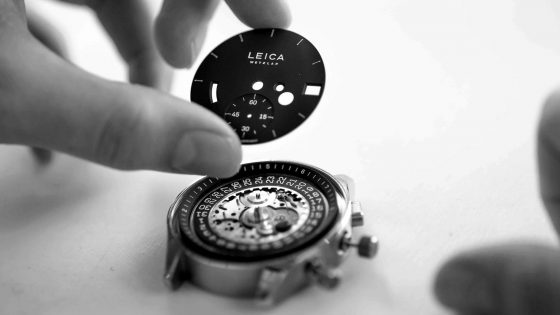
What classification does the movement have then? Has it been subjected to a chronometer test?
It sits in the highest class. We can only subject it to the chronometer test once we’ve decided whether to comply with Swiss or German chronometer regulations. The movement itself is extremely complicated, extremely difficult, and extremely expensive. The simplest of the watches will cost no less than 10 000 euros. And, of course, the gold edition will sell for a lot more.
So the aim is to keep up with the big guys?
Yes, that’s the aim, and we also think we will manage to. Not in the quantity, but in the quality. We have the right partners to do so, and we will, of course, build up the corresponding customer service department, also in Wetzlar.
What can you say about the design? It sounds like it was a pretty tough process, that ended up looking like a train station clock at first.
We’ve opted for a very classic German design for the first watches. In this regard, we were very involved in designing it with Achim Heine. That’s the good thing about him, because he can be flexible. In the end it was down to millimetres. It was about proportions: how do we position the small circle for the seconds correctly? What should we do with the lettering? The basic design was clear, but then things really got going. In Germany we have, for example, the very respected designs by Nomos, a reduced Bauhaus in fact. In our case we believed we could justify a line somewhere in the middle. If you look at the connection to the M, for example, then this fits with Leica.
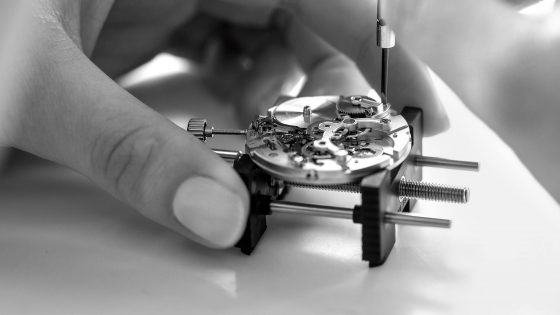
This was obviously also a fundamental point: to convey design elements from the camera to the watch?
We talked about this with Achim Heine for a long time; and he gave this much consideration. We then found four or five elements that could be applied in an interpretive manner. We avoided adding a red dot. A red dot only appears when you press the push-piece. But that’s not the “normal” state: it’s there when you push it, then it’s gone when you push it again. Why? Because a red dot doesn’t work on a watch; because if you do things properly a watch is something very symmetrical with a couple of proportional considerations. So the red dot is disturbing. But we include red in the crown, where there’s a small ruby. So, in a certain way, this serves as a reference to the Leica red dot.
How is the name Leica justified in the watch? Are the elements taken from camera design supposed to underline the relationships between camera and watch?
Yes. Leica’s design vocabulary goes all the way back to Ludwig Leitz II, who was the head of the research and development department back in 1939; and to Heinrich Janke, the father of the red dot, whom Ludwig Leitz employed in the early fifties. They were the famous M designers, who later also created the Leicaflex, the Leicaflex SL and the Pradovit.
When you read Janke’s design book, you suddenly understand what Leica did differently. It describes how Leica came to achieve its proportions. They were clearly derived from human forms, from the human head. The designers developed grids for the proportions, then looked to see how human proportions are actually structured. This means that when you look at Leica objects, you see proportions that come, on the one hand, from a technology design, on the other, from a human one.
When you take these principles and transfer them to something else, I don’t believe you can go wrong. Seen from this perspective, there is surely no harm in creating a certain relationship between watch and camera. For example, if you look at the Leicameter, the attachable exposure meter for the M3, this gives an idea for a different type of power reserve indicator. From the watchmaking perspective that was extremely difficult: it’s an unusual progress bar that goes from black to white. However, the design reference of our cameras is never an end unto itself, but has a reason to be, a functionality.
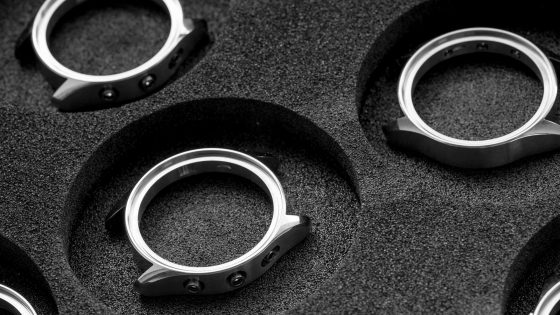
Can you tell us anything about the production numbers planned?
They will be small. Next year we probably won’t produce more than 380 to 400 pieces. At the moment we are producing up to 18 000 Ms a year. Consequently, we can only talk about a small serial run in this case. After five years we probably won’t be producing more than 2500 pieces a year of this type of watch.
Will it only be possible to acquire these watches through Leica?
The difference in Leica’s case is that, compared to other manufacturers in this field, we have our own retail stores. This means that the introduction will only be carried out through a few select Leica stores, and the employees there will be trained for this throughout the year.
Where do you see the connection between time and photography?
That’s an interesting question! But it’s not easy to answer. Maybe I can do it like this: a snapshot is an attempt to capture time. A watch can’t do that. In the case of ambitious photography it’s more than the snapshot, it’s more than just capturing time – it’s about art. That’s something different to measuring time. Photography freezes time; a watch allows you to structure the flow of time.
Why is Lehmann Präzision GmbH the right partner for Leica?
On the one hand, Markus Lehmann is your classic, industrial tinkerer, on the other, a watch enthusiast. That’s an unusual combination. His company builds incredible manufacturing machines for the watch industry, but also for the camera industry. For the so-called centering in lens production, we use Lehmann machines in part. Very sophisticated machines to correctly centre portraits Helge Kirchberger the individual aspheric lenses in the body of a complete camera lens. His main outlet area, however, is the watch industry. He builds very complex machines for it, virtually all the way to fully automatic.
So, on the one hand, Markus Lehmann delivers machines for the watch industry, while, on the other, he is a watchmaker. In addition, there’s the fact that he’s a Swabian, very precise and with Swabian characteristics: when he tinkers, you’re not allowed to disturb him. We are helping Markus with the building of a special electro-plating, so that we can also be more independent with the watch dials. The thing is that the way a watch looks is defined 80 percent by the dial – that was the design challenge for the Leica watch!
All in all, it was a long and very challenging process, but I think that we and our future watch customers will look at the result with pleasure. Watch products from Leica Wetzlar. For me it’s like things have nearly come full circle, because, after finishing his apprenticeship in Pforzheim, Ernst Leitz first worked in the Swiss watch industry, before coming to Wetzlar in 1864!
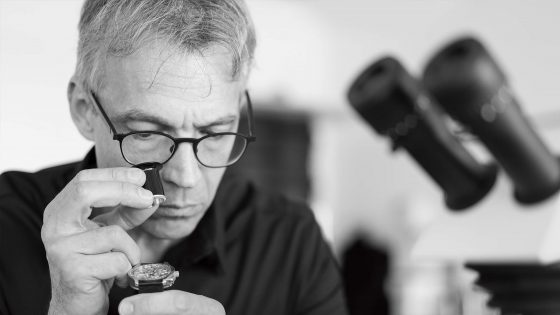
You have previously designed several cameras and binoculars for Leica. Did you benefit from this experience when working on the Leica watches?
Being familiar with Leica and their products certainly gave me a good foundation. The first camera I designed for Leica was the C1 compact in 1999, followed by the C2 and C3, the Leica CM and CM Zoom, the Digilux series, the D-Lux and Leica’s Ultravid binocular models. This has certainly given me an in-depth understanding of the brand and its different facets.
But of course, watches are in an altogether different category.
Yes, indeed, Leica primarily stand for cameras and sports optics. This meant that for this project, I had to determine a connection between these different types of products, and find the right inspiration for the design of a Leica watch.
What were your sources of inspiration?
To my mind, the watches perfectly complement the Leica product portfolio. For one, Leica as a company have always been synonymous with supreme excellence and mechanical precision – which is, of course, also a fitting basis for the development of a very complex mechanical watch. Secondly, the concept of time plays an important role within photography. The exposure time, for example, is vital for a successful image. Then there is the selftimer mechanism in classic Leica models that resembles a small watch movement; its runtime may only be 10 seconds, as opposed to a day or a week, but the principle of using mechanics for the purpose of measuring time is still the same. So you could say that, in addition to technical excellence, the watch also has some functional commonalities with Leica’s cameras.
Which design principles do you consider to be essential in the new Leica watches?
The Leica products of the past 100 years have predominantly been very purist, with many interesting geometric details. This has always inspired me, particularly when I was working on camera designs. When developing the watches, it was always clear to me that there had to be a close connection between the strong geometry of the cameras and the exterior aesthetics of the watches.
What role do you think the watches will occupy in the world of Leica?
Watches represent a new product category for Leica, so it must be carefully evaluated where on the market they are to be positioned. A distinguishing feature of this watch is that we have not simply adapted an existing movement: Andreas Kaufmann specifically wanted to develop a genuine Leica watch, in order to introduce an innovative product to the market. He is a watch enthusiast, and was convinced that the Leica brand with its propensity for technical perfection could contribute something extraordinary to this field. This means that the watches represent a separate aspect of Leica, and are not just an addition to the camera catalogue. Yet at the same time, the watches can’t be too divergent from Leica’s other products – after all, they are intended to be part of the brand, with many parallels and commonalities, as well as some clear distinctions.
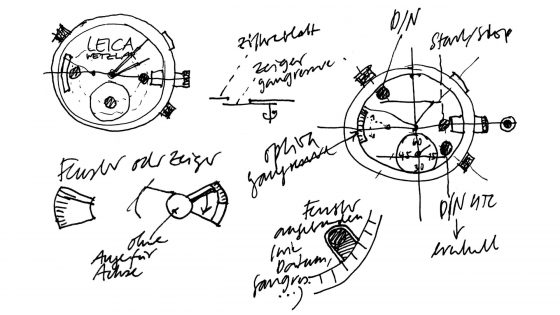
In your opinion, what is more difficult to design – a camera or a watch?
Over the course of my career, I have designed a great many products, and the watch concept certainly counts among the more demanding challenges. There are so many decisions to make that determine the watch’s overall appearance: materials, surfaces, colours, form and texture of the operating elements, hands, indices, numerals, typography, dial and cover glass, to name but a few. This makes the design process extremely complex – especially as each of those decisions has a strong bearing on the overall character of the final product. Andreas Kaufmann and I discussed at great length which elements, functions and innovations might be fitting for this new Leica product. And then Markus Lehmann came on board, an entrepreneur from Germany’s Black Forest region whose company not only produces top-of-the-range machinery for the watch industry, but also makes its own brand of exceedingly high-end wrist watches. The two companies entered into a very close cooperation that enabled those involved to explore new and unusual options – thereby ensuring that the Leica watch could deliver something truly special, also in terms of functionality.
Can you give us an example of these special characteristics?
Together with Markus Lehmann we refined and evolved the concept of the push-piece crown. With conventional watches, you have to slightly pull out the crown in order to stop the watch and set the watch hands. On the Leica watch, however, you actually press the crown – rather like the shutter of a camera. The moment you push down the crown, the watch stops and the second hand jumps to zero. Another push, and the watch starts up again. This is a highly unusual detail which, in my opinion, is very fitting for Leica.
Has the Leica watch been developed with a specific target group in mind?
There are, of course, many Leica fans around the world who appreciate the precision and design of products Made in Germany. For me, the design process was a continuous balancing act between the rather functional exterior of a camera, and the aesthetics of a timepiece that is, after all, also a piece of jewellery. A watch is both a utilitarian tool to measure time and an analogue masterpiece with microscopically small, yet robust mechanics – but it is also an ornament that can express something about the wearer’s personality. Wearing a Leica watch is a statement; it shows that technical excellence is something this person holds in high regard.
To what extent does the Leica brand come into play?
This was an extremely important question for me, right from the beginning of the design process: just how closely should the Leica watch reflect the brand and the characteristic red dot? After a few experiments I quickly decided that I did not want to display the red dot and classic Leica logo in cursive writing on the dial. I felt that putting the Leica dot on the watch pushed it too far towards the appearance of the camera, and detracted from its status as a stand-alone product. I spent a long time looking for an alternative solution – something that was rooted in Leica’s history and the foundations of the brand.
I eventually found it on the top plate of the Leica M6, which features the brand name written in uppercase letters. Consequently, I adopted the same style and font for all numbers and letters on the dial – including the added “Wetzlar” lettering below the “Leica” name – as well as the inscriptions on the back of the watch.
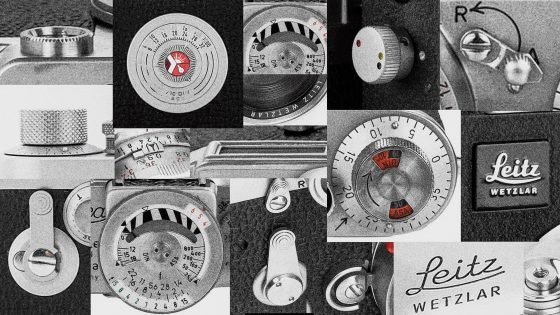
Mr. Lehmann, how did the connection between your company and Leica first come about?
When Leica began to pursue watch projects a few years ago, we were asked whether we would generally be interested in a joint endeavour. In the preliminary meetings that followed, it quickly became clear that we could have a very fruitful collaboration.
How did you find this collaboration?
Because our company has built high-precision machines for Leica in the past, I found it very interesting to now work together in an entirely different capacity. The watch project is very close to my heart. Over the past two years, the connection between the two brands has been repeatedly reinforced.
The movement of the Leica watch is a complete in-house development. What makes it so particular?
The Leica watch has some really unique features that you will not find in any conventional timepiece currently on the market. We have created a watch that is characterised by Leica’s DNA, but is autonomous in its design and execution. It is a truly exceptional product on the watch market. In terms of mechanics, the challenge was not only in the construction of the movement, but also in the production of specific parts that had never existed in this form before.
One example is the patented push-piece crown with separate position indicator on the dial – which, in turn, is coupled with the zero position of the small second hand. All of the movement parts have been designed by our own team and are largely produced in-house. We also carry out the surface treatment, assembly and adjustment of the movement. Being able to manufacture the majority of components in-house is a great advantage, and it means that we even craft the casing, the dial and the hands of the Leica watch ourselves.
What can you tell us about the patented push-piece crown of the Leica watch?
Normally, you have to slightly pull out the crown of a watch in order to adjust the watch hands. In other words, the crown has two positions: one for winding the watch, the other for setting the time; often, a quick-set mechanism for the date is also integrated. On the Leica watch, however, we have implemented a push-piece crown that has been coupled with a column wheel – not unlike on a chronograph. As soon as you push the crown, the small, circular status indicator on the dial turns from white to red, and you are able to set the time. The date, by contrast, is adjusted via a separate push-button. Integrating this mechanism into the construction of the movement proved to be a particularly challenging endeavour.
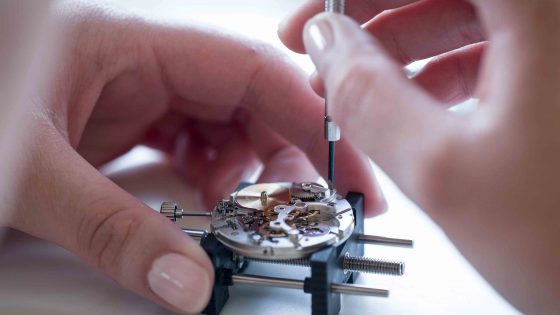
Even at the premium end of the market, there are thousands of timepiece products to choose from. What is it that sets Leica watches apart – in other words, what turns a watch into a Leica watch?
Aside from the example I described, it is also the visual design that distinguishes the Leica watch from other products on the market. This is what I was referring to when I talked about integrating Leica’s DNA. For example, the shape of the watch body echoes that of a camera. Similarly, the power reserve indicator is reminiscent of the curved blades of an aperture: when the watch is fully wound, the indicator is open and white; at the end of its running time, it is closed and black. The push-piece crown alludes to the function of a shutter release. In essence, the designers set out to create a watch that is both technically accomplished and aesthetically pleasing – and I feel that this has definitely been achieved.
The product design industry has coined the famous expression, “form follows function”. Coming from a more artisan perspective, how would you say this applies to watchmaking?
This is another point in which our collaboration was extremely positive. From the outset, Leica put forward the watch’s proposed functions, such as the power reserve indicator and the second time zone in the L2, as well as the introduction of the pushpiece crown. We then drafted a preliminary design, and I examined if and how it could be realised in practice. Anything that was feasible was implemented; otherwise, we made adaptations. This is how both models were developed. A good concept must make sense in terms of the watch’s inner workings, and involve parts that are realistic to produce.
How much “Lehmann” is in the Leica watch?
Our company was involved in the development process from the very beginning, so the Leica watch also has many Lehmann characteristics. We designed, built and tested numerous prototypes before finally presenting the end result. It was important to me that this collaboration with Leica would yield a truly excellent and extraordinary timepiece. I take great pride in the Lehmann watches we have been manufacturing for a number of years now, and which are a testament to our competence as watchmakers. With the Leica watch, we have entered into a partnership that is mutually beneficial and advances the evolution of both brands, despite the fact that we each occupy such different fields.
